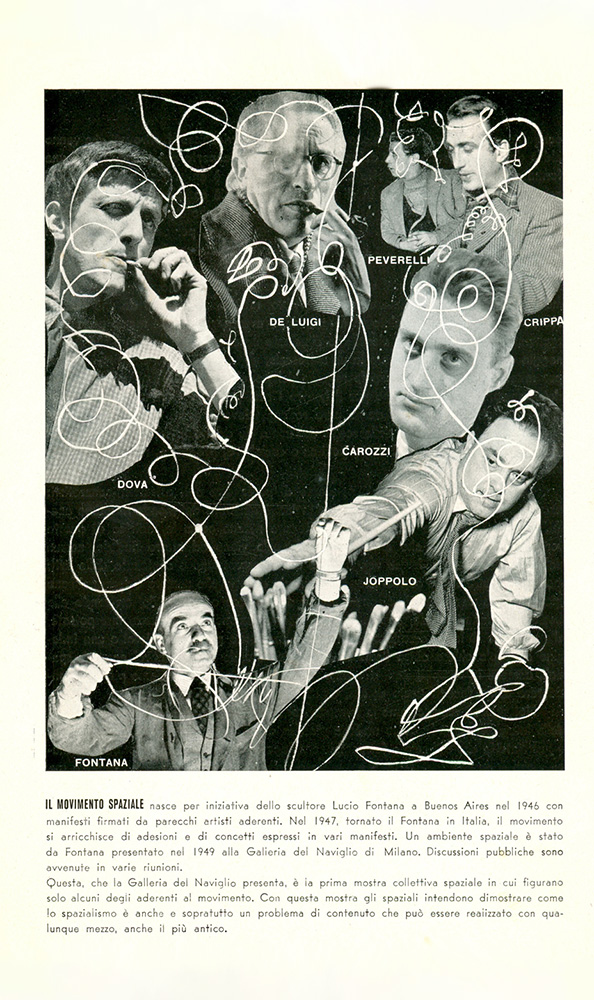
Space era
A milestone of human history arrives: the conquest of Space. In art, Spatialism by Lucio Fontana represents the mystery hidden behind the cuts on canvas, which are the expression of the possibility to imagine. He dedicated his manifesto to scientists as a signal of a period in which science (no more literature) determined human development. Fontana exhibited at the end of the 1930s with Futurist artists; his Spatialism seeked modernity in a very centred way for that period.
Brajo Fuso interpreted the cosmic era, depicting the Moon and its satellites. He was not the only one: many artists were fascinated by this revolution. Giulio Turcato made lunar surfaces; later on, Mario Schifano made In diretta dalla Luna (Live from the Moon) collection. Some Futurist artists, who were still working, returned to imagine spatial elements: Alessandro Bruschetti invented the Purilumetria, Leandra Angelucci painted flying saucers, and Sante Monachesi made Agrà (contraction of the Italian word agravità which means with no gravity).
In absence of gravity, it is possible to fluctuate in a silent and pacific dimension, the same peace that should have started a new era for humankind. According to intellectuals of that period, seeing the Earth from an external, concrete point of view made people aware of the futility of the war since they thought to be alone in the Universe. A belief that unfortunately turned out to be illusory.






